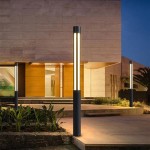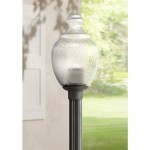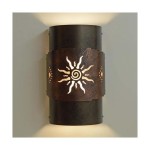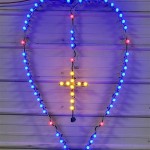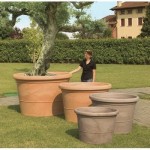Troubleshooting an Outdoor Floodlight Sensor Not Working With Arduino
Outdoor floodlight sensors are valuable tools for enhancing security and providing illumination when needed. Integrating these sensors with an Arduino platform allows for custom control and automation. However, situations may arise where the floodlight sensor fails to communicate with the Arduino, causing the system to malfunction. Addressing these issues involves a systematic approach to identify the root cause and implement appropriate solutions.
1. Verifying Power and Connections
A fundamental step in diagnosing any electronic circuit is to ensure proper power supply and connections. The floodlight sensor and Arduino require adequate power to operate effectively. Begin by checking the power source for the floodlight sensor, verifying that it is connected correctly and providing the required voltage. In most cases, this will involve a typical AC power supply, but some sensors may use batteries.
Inspect the wiring between the floodlight sensor and the Arduino. Ensure that the wires are securely connected at both ends and that there are no loose or broken connections. Make sure the wiring is properly routed and does not pose any hazards. If using a breadboard, double-check that the wires are inserted into the correct holes and that the connections are stable. It's also advisable to use a multimeter to verify that the sensor is receiving the correct voltage and that the connection is continuous.
2. Evaluating Sensor Functionality
Once power and connections are verified, it's crucial to ensure that the floodlight sensor itself is functioning correctly. Test the sensor by manually triggering it, such as by shining a light source at the sensor or blocking its field of view. Observe the sensor's response and check if it produces an output signal. If the sensor doesn't respond, it might be faulty or require adjustments in its sensitivity settings.
If the sensor is emitting a signal, verify that the Arduino is receiving it. This can be done by monitoring the input pin on the Arduino that is connected to the sensor's output. Connect a digital multimeter to the pin and observe if the signal is changing when the sensor is triggered. If the Arduino does not detect any signal, there might be a problem with the sensor's output or the wiring between the sensor and the Arduino.
3. Analyzing Arduino Code and Configuration
The Arduino code and configuration play a critical role in determining the successful communication between the sensor and the Arduino. Review the code to ensure that the input pin connected to the sensor's output is correctly defined and that the appropriate functions are used to read the sensor's state. Additionally, verify that the code includes the necessary logic for handling sensor triggers and controlling the floodlight.
Check the Arduino's configuration for any discrepancies that might affect the functionality. This includes verifying that the input pin is set to "input" mode, that the internal pull-up resistor is enabled, and that the sensor's output signal is compatible with the Arduino's input. If the code uses libraries, make sure they are properly installed and that their parameters are configured correctly. Also, ensure that the Arduino's internal clock speed is set to the correct value, as a mismatch can lead to synchronization issues.
4. Troubleshooting Advanced Issues
If the problem persists after addressing basic troubleshooting steps, consider more complex factors. The floodlight sensor's operating range and the Arduino's processing power can influence communication. Ensure that the sensor's detection range is sufficient to cover the intended area and that the Arduino has enough processing power to handle the sensor's data without delays or errors. If the sensor's output signal is too weak, consider using an amplifier to boost its strength.
Environmental factors can also affect sensor performance. Extreme temperatures, humidity, or electromagnetic interference can disrupt communication. Shield the sensor and wiring from environmental hazards, and consider using a stable power source to minimize interference. If the sensor is susceptible to interference, try shielding the circuit with a Faraday cage or moving the sensor away from sources of interference.
In cases where the sensor continues to malfunction despite thorough troubleshooting, it's advisable to consult the manufacturer's documentation or seek technical support. They provide detailed information about the sensor's specifications, operation, and potential troubleshooting methods.

Bypassing Ir Remote For 10w Rgb Led Flood Light With Arduino

How To Reset Outdoor Motion Sensor Lights Electronicshub

Automating Solar Lights With Arduino Globalspec

How To Reset Outdoor Motion Sensor Lights Electronicshub

Low Power Solar What Is The Best Way Hardware Arduino Forum

Arduino M728 10w 20w Rgb Motion Sensor Led Floodlights Outdoor Spotlights Spot Flood Light Electronic Hobby Kit In Buy

Determining If The Person Opening Door Is Either Inside Or Outside Project Gui Arduino Forum

Night Security Light With Arduino Random Nerd Tutorials

Arduino Pir Motion Sensor Module

Off The Shelf Er Build A Sensor System To Watch Backyard New Stack
Related Posts

